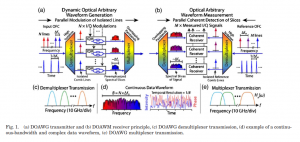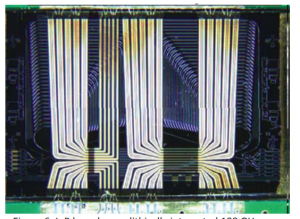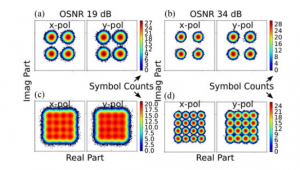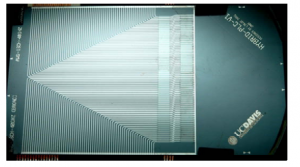Project Overview
Elastic optical networking (EON) [1] enables efficient spectrum utilization by allocating variable bandwidth to each user according to their actual needs. Unlike WDM networks, EON utilizes the optical spectrum divided into arbitrary or smaller frequency units (e.g., 12.5 or 25 GHz, also known as spectral slices). This allows various connections (flexpaths) to be set up using an arbitrary bandwidth of spectral slices of arbitrary modulation format depending on the bandwidth, the distance, and the link condition requests of the spectral slices for transmission. The flexibility in spectrum and bandwidth allocation together with variable modulation formats allows for more optimized utilization of network resources according to the given traffic demand and the link conditions. The network resource optimization spans temporal and spectral domains, and efficient and effective algorithms need to be part of the network control and management to allocate the available resources optimally. For instance, dynamic adaptation to the varying traffic demand can lead to stranded and fragmented [2,3] spectral resources in EON, where there is no fixed spectral grid. Recent studies investigated spectral and temporal domain solutions for fragmentation-aware routing, spectrum, and modulation format assignment (RSMA) [4,5] in 2D EON with time and spectrum flexibility.
A major challenge for realizing transmitters and receivers for high-capacity flexible bandwidth networking is overcoming the electronic bottleneck to enable scaling of single channel bandwidths using existing electronics. A more general method for broadband waveform generation is based on dynamic optical arbitrary waveform generation (OAWG). The generated arbitrary optical waveforms can include data waveforms in both single carrier modulation formats and multicarrier modulation formats such as CoWDM and OFDM. Here, dynamic refers to continuous waveform generation, as opposed to lineby-line pulse shaping, which has time duration limitations typically on the order of tens of picoseconds. Spectral-slice based dynamic OAWG can create continuous, high-fidelity waveforms that overcome the limitations of rapidly updating the modulations to a line-byline pulse shaper. Spectral-slice dynamic OAWG utilizes the parallel synthesis and coherent combination of many lower bandwidth spectral slices to create broadband data waveform. In contrast to multicarrier systems, the spectral slice bandwidth is not related to the subcarrier bandwidth of generated waveforms. This removes any restrictions on the subcarrier bandwidth and its modulation format and is only limited by the total operational bandwidth of the OAWG transmitter. The parallel nature of this transmitter structure enables bandwidth scalability without increasing the bandwidth demand on the supporting electronics. The complementary receiver is optical arbitrary waveform measurement (OAWM), in which a broadband, continuous bandwidth waveform is divided into many spectral slices for parallel measurement using independent digital coherent receivers.
Current Research Activities
This project pursues DOAWG/DOAWM based bandwidth-variable optical transceiver realized by high speed field programmable gate array (FPGA)-based digital signal processing (DSP) techniques. In particular, UC Davis research team has been pursuing the following research efforts:
1. Design and implementation of real-time DOAWG/DOAWM algorithms on FPGAs. To migrate from the conventional offline DSP based DOAWG/DOAWM, novel slicing and de-slicing algorithms which suitable for parallel realization on FPGAs are required. On top of the DSP building blocks that can be found on traditional coherent receivers, such as adaptive equalizer, frequency offset estimators, and carrier phase recoveries.


Fig.2. 100 GHz InP OAWG chip.

Fig.3. 60 Gbd QPSK/16-QAM synthesized by two-slice OAWG transmitter.

Fig.4. 640 GHz Silica OAWM Planar Lightwave Circuit.
Reference
[1] M. Jinno, H. Takara, B. Kozicki, Y. Tsukishima, Y. Sone, and S. Matsuoka, “Spectrum-efficient and scalable elastic optical path network: Architecture, benefits, and enabling technologies,†IEEE Commun. Mag., vol. 47, no. 11, pp. 66–73, 2009.
[2] Y. Yin, K. Wen, D. J. Geisler, R. Liu, and S. Yoo, “Dynamic on-demand defragmentation in flexible bandwidth elastic optical networks,†Opt. Express, vol. 20, pp. 1798–1804, 2012.
[3] Y. Yin, H. Zhang, M. Zhang, M. Xia, Z. Zhu, S. Dahlfort, and S. J. B. Yoo, “Spectral and spatial 2D fragmentation-aware routing and spectrum assignment algorithms in elastic optical networks [Invited],†J. Opt. Commun. Netw., vol. 5, pp. A100–A106, Oct. 2013.
[4] L. Velasco, A. Castro, M. Ruiz, and G. Junyent, “Solving routing and spectrum allocation related optimization problems: From off-line to in-operation flexgrid network planning,†J. Lightwave Technol., vol. 32, pp. 2780–2795, 2014.
[5] A. Castro, L. Velasco, M. Ruiz, M. Klinkowski, J. P. Fernández-Palacios, and D. Careglio, “Dynamic routing and spectrum (re)allocation in future flexgrid optical networks,†Comput. Netw., vol. 56, pp. 2869–2883, 2012.
